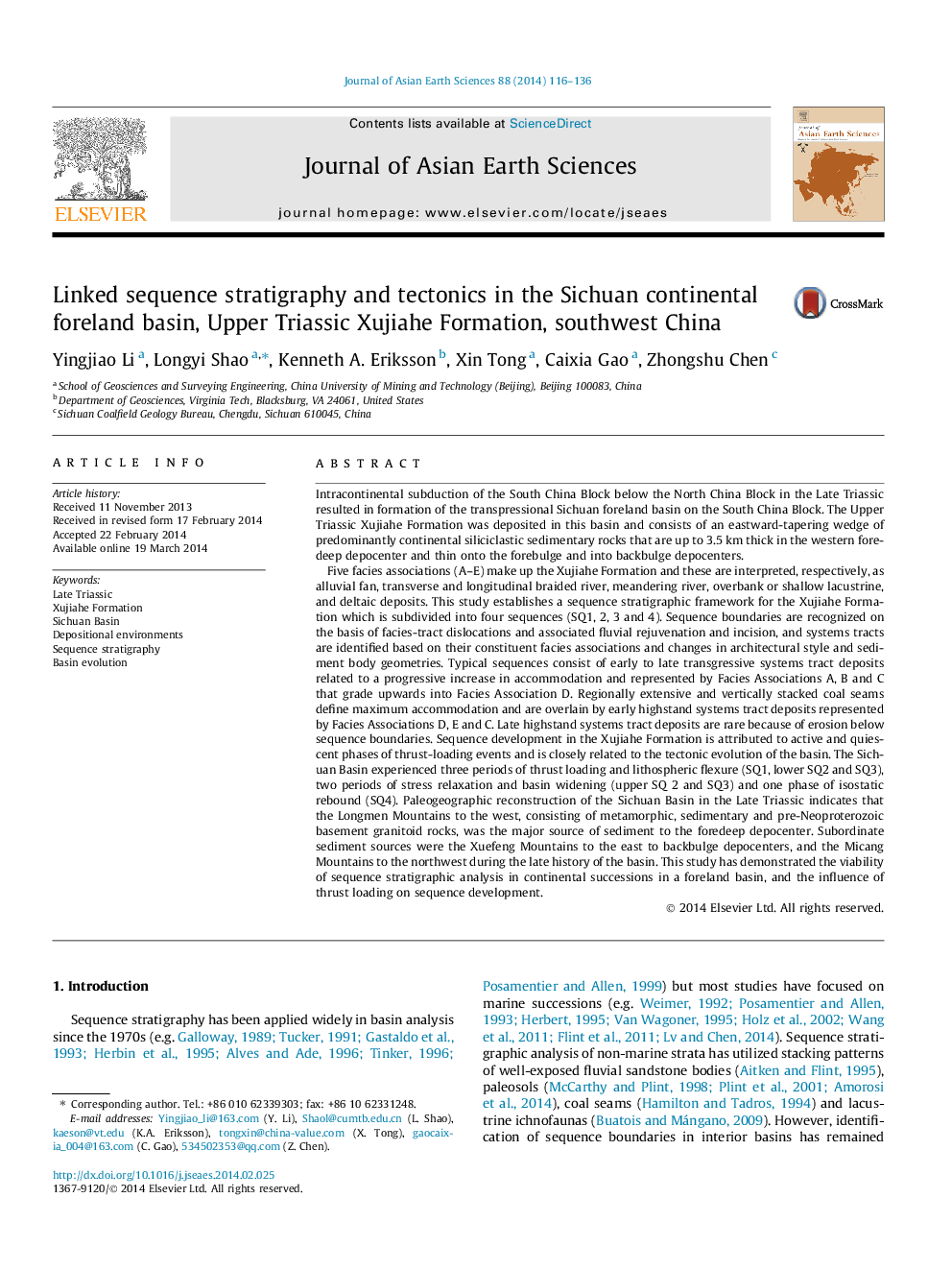| کد مقاله | کد نشریه | سال انتشار | مقاله انگلیسی | نسخه تمام متن |
|---|---|---|---|---|
| 4730671 | 1640380 | 2014 | 21 صفحه PDF | دانلود رایگان |

• This paper presents an integrated sequence stratigraphic analysis of the Xujiahe Formatiom.
• This paper promotes the understanding of sequence stratigraphy in non-marine successions.
• Sequence development is related to thrust loading events in continental foreland basins.
Intracontinental subduction of the South China Block below the North China Block in the Late Triassic resulted in formation of the transpressional Sichuan foreland basin on the South China Block. The Upper Triassic Xujiahe Formation was deposited in this basin and consists of an eastward-tapering wedge of predominantly continental siliciclastic sedimentary rocks that are up to 3.5 km thick in the western foredeep depocenter and thin onto the forebulge and into backbulge depocenters.Five facies associations (A–E) make up the Xujiahe Formation and these are interpreted, respectively, as alluvial fan, transverse and longitudinal braided river, meandering river, overbank or shallow lacustrine, and deltaic deposits. This study establishes a sequence stratigraphic framework for the Xujiahe Formation which is subdivided into four sequences (SQ1, 2, 3 and 4). Sequence boundaries are recognized on the basis of facies-tract dislocations and associated fluvial rejuvenation and incision, and systems tracts are identified based on their constituent facies associations and changes in architectural style and sediment body geometries. Typical sequences consist of early to late transgressive systems tract deposits related to a progressive increase in accommodation and represented by Facies Associations A, B and C that grade upwards into Facies Association D. Regionally extensive and vertically stacked coal seams define maximum accommodation and are overlain by early highstand systems tract deposits represented by Facies Associations D, E and C. Late highstand systems tract deposits are rare because of erosion below sequence boundaries. Sequence development in the Xujiahe Formation is attributed to active and quiescent phases of thrust-loading events and is closely related to the tectonic evolution of the basin. The Sichuan Basin experienced three periods of thrust loading and lithospheric flexure (SQ1, lower SQ2 and SQ3), two periods of stress relaxation and basin widening (upper SQ 2 and SQ3) and one phase of isostatic rebound (SQ4). Paleogeographic reconstruction of the Sichuan Basin in the Late Triassic indicates that the Longmen Mountains to the west, consisting of metamorphic, sedimentary and pre-Neoproterozoic basement granitoid rocks, was the major source of sediment to the foredeep depocenter. Subordinate sediment sources were the Xuefeng Mountains to the east to backbulge depocenters, and the Micang Mountains to the northwest during the late history of the basin. This study has demonstrated the viability of sequence stratigraphic analysis in continental successions in a foreland basin, and the influence of thrust loading on sequence development.
Journal: Journal of Asian Earth Sciences - Volume 88, 1 July 2014, Pages 116–136